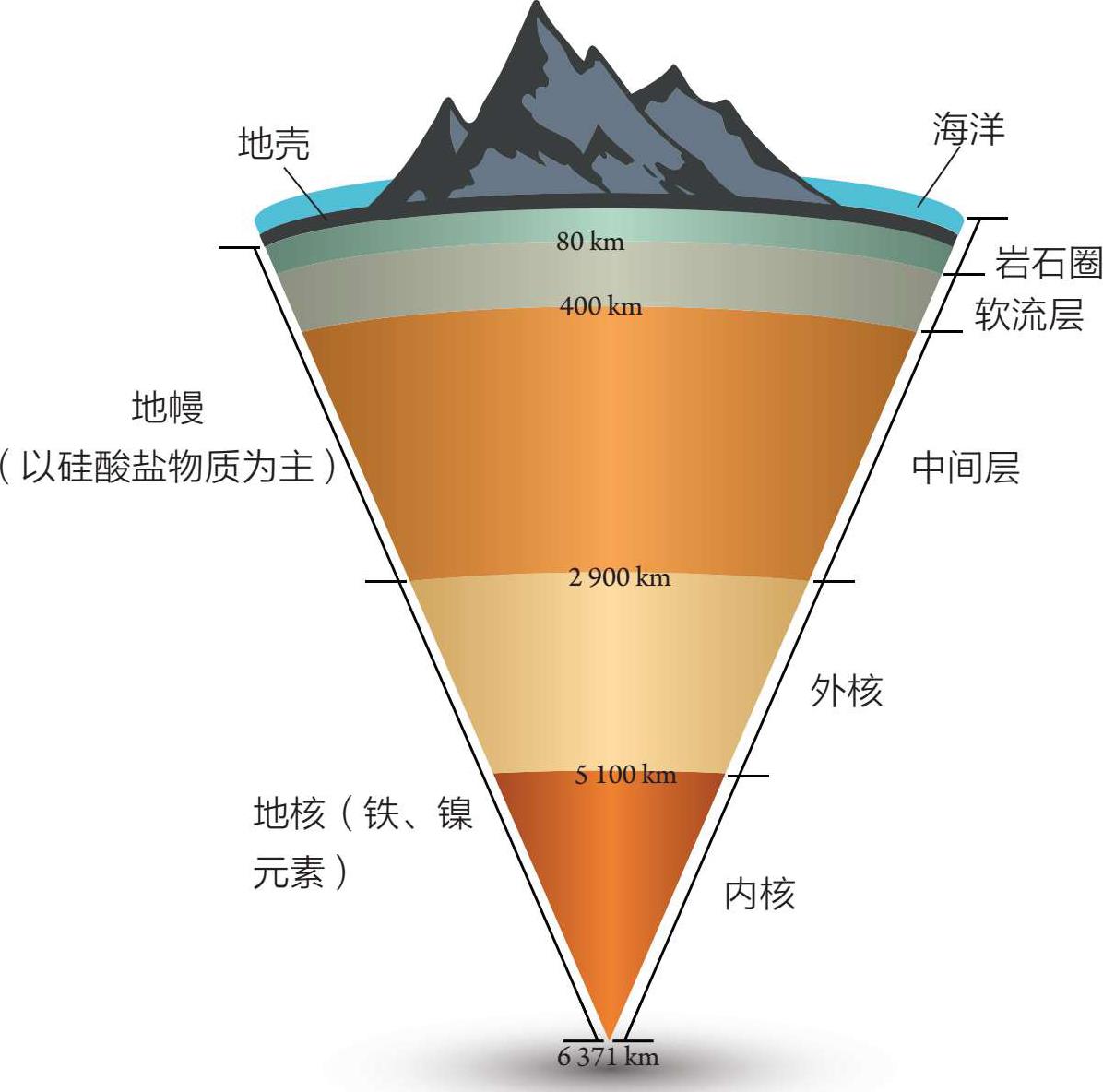Basic knowledge: The internal structure of the Earth
With the development of science to this day, although people are able to "go up to the sky and look for the moon", they still have no way to enter the earth. At present, the deepest borehole in the world is only 12 kilometers, and it has not even penetrated the crust. Scientists can only indirectly understand the mysteries of the Earth's interior by studying seismic waves, geomagnetic waves, and volcanic eruptions. The propagation speed of seismic waves varies within the same depth, which reflects the different material composition or state inside the Earth. This is a means for scientists to understand the internal structure of the Earth.
There are two interfaces within the Earth with significant changes in wave velocity. The depth of the first interface is not very consistent, with a deeper depth in the mainland region, up to 60 kilometers at most; In the oceanic region, it is relatively shallow, with a minimum depth of less than 5 kilometers. This interface is called the "Moho surface". The depth of the second interface is about 2900 kilometers, known as the "Gutenberg surface". These two interfaces divide the Earth's interior into three major layers, namely the crust, mantle, and core.

The structure of the Earth's internal sphere
Crust: The crust is composed of solid rocks, with significant variations in thickness. The oceanic crust is relatively thin, averaging 6 kilometers, with the thickest being about 8 kilometers and the thinnest being less than 5 kilometers; The continental crust is relatively thick, with an average of 35 kilometers and a maximum thickness of up to 70 kilometers. The average thickness of the entire crust is about 6 kilometers, which is only 1/400 of the radius of the Earth. The crust can be further divided into two layers: upper and lower.
Mantle: The mantle is located between the Moho and Gutenberg surfaces, with a thickness of over 2800 kilometers and an average density of 4.9 grams per cubic centimeter, accounting for approximately 83.4% of the Earth's total volume and 2/3 of its total mass. The mantle is generally divided into two parts, the upper and lower mantle, with a boundary of 670 kilometers.
Core: The core is separated from the mantle by the Gutenberg surface, with a thickness of 3473 kilometers, accounting for approximately 16.3% of the Earth's total volume and one-third of its total mass. According to the variation of seismic wave velocity, the boundary can be divided into outer core, transition layer, and inner core at two sub primary interfaces of 4640 kilometers and 5155 kilometers.

